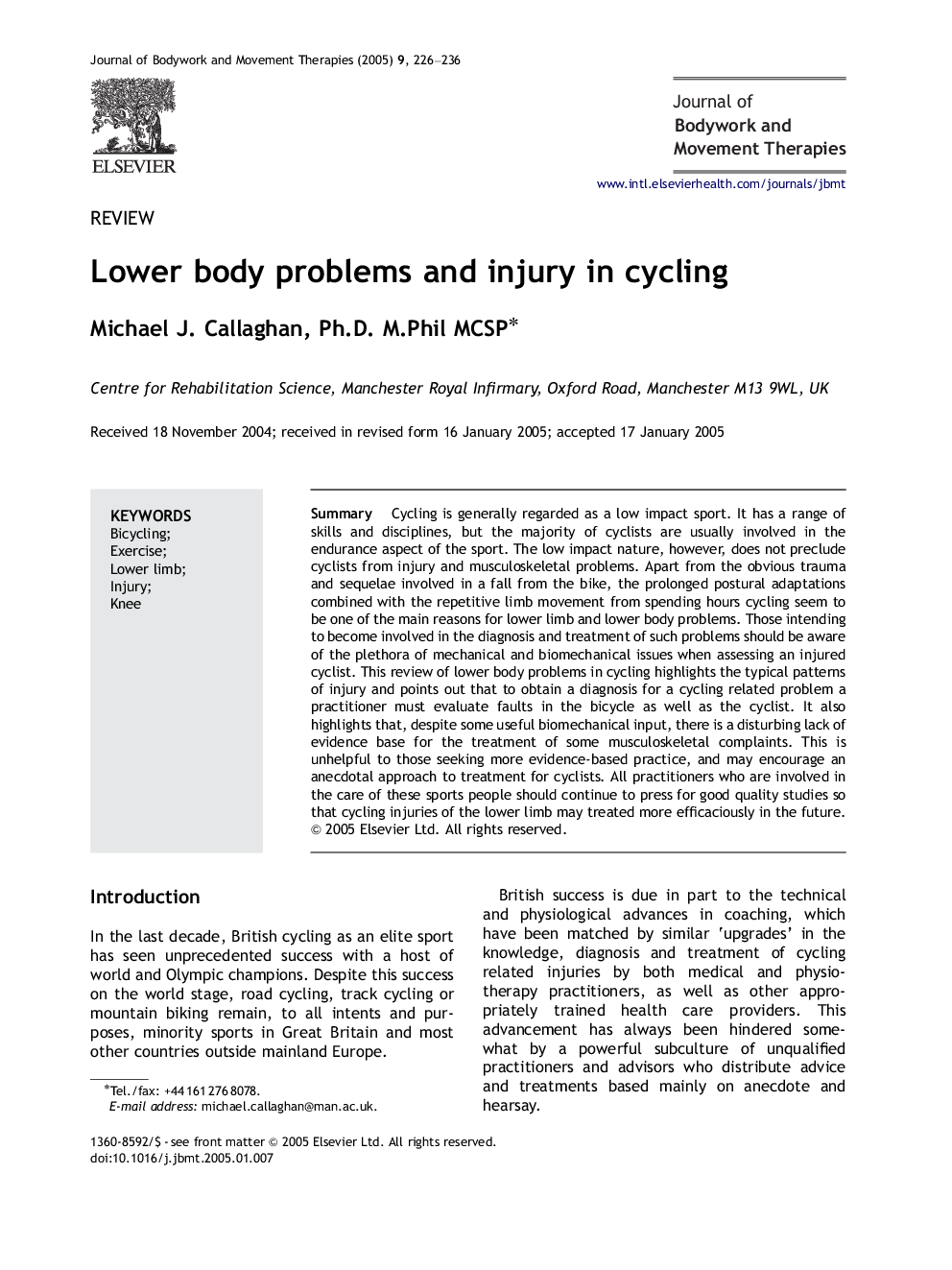| Article ID | Journal | Published Year | Pages | File Type |
|---|---|---|---|---|
| 9046757 | Journal of Bodywork and Movement Therapies | 2005 | 11 Pages |
Abstract
Cycling is generally regarded as a low impact sport. It has a range of skills and disciplines, but the majority of cyclists are usually involved in the endurance aspect of the sport. The low impact nature, however, does not preclude cyclists from injury and musculoskeletal problems. Apart from the obvious trauma and sequelae involved in a fall from the bike, the prolonged postural adaptations combined with the repetitive limb movement from spending hours cycling seem to be one of the main reasons for lower limb and lower body problems. Those intending to become involved in the diagnosis and treatment of such problems should be aware of the plethora of mechanical and biomechanical issues when assessing an injured cyclist. This review of lower body problems in cycling highlights the typical patterns of injury and points out that to obtain a diagnosis for a cycling related problem a practitioner must evaluate faults in the bicycle as well as the cyclist. It also highlights that, despite some useful biomechanical input, there is a disturbing lack of evidence base for the treatment of some musculoskeletal complaints. This is unhelpful to those seeking more evidence-based practice, and may encourage an anecdotal approach to treatment for cyclists. All practitioners who are involved in the care of these sports people should continue to press for good quality studies so that cycling injuries of the lower limb may treated more efficaciously in the future.
Related Topics
Health Sciences
Medicine and Dentistry
Complementary and Alternative Medicine
Authors
Michael J. Ph.D. M.Phil MCSP,
